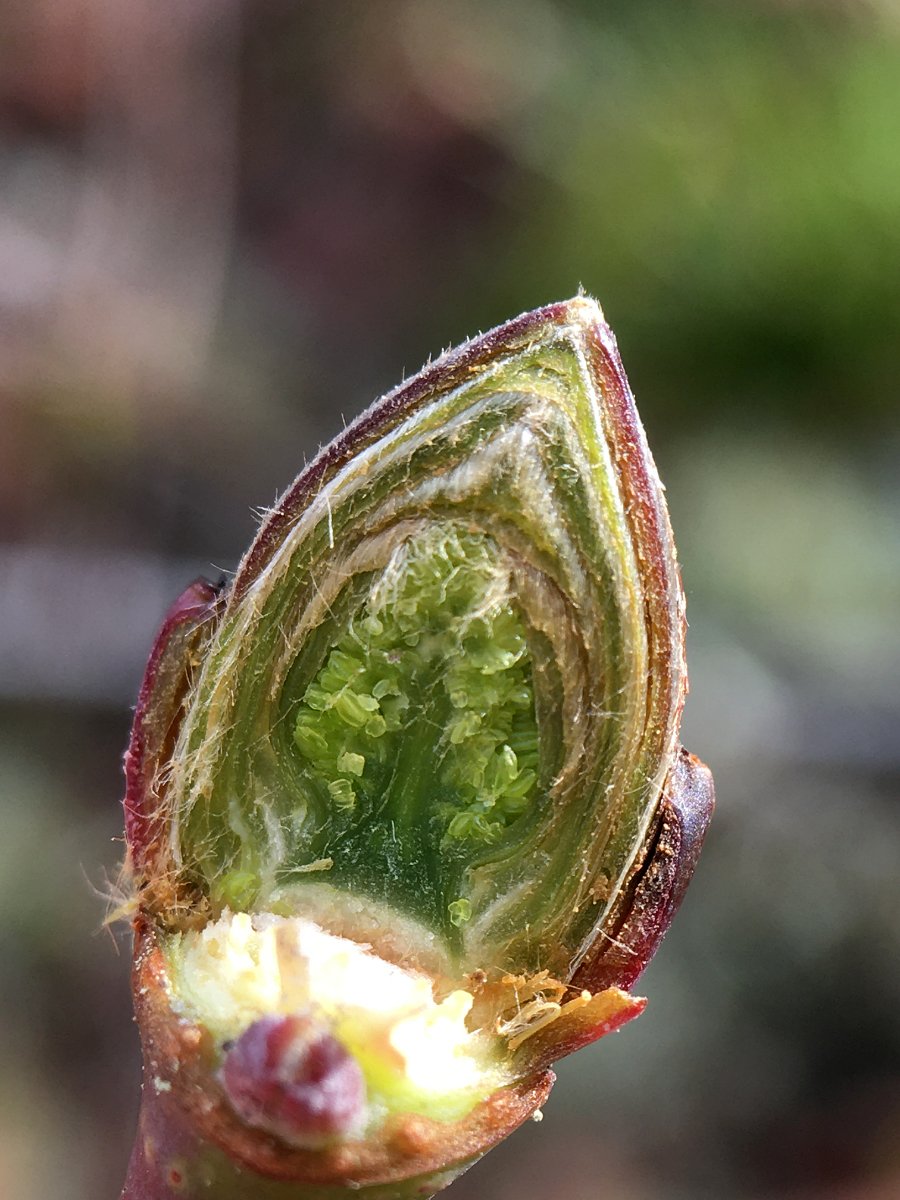I was making a cup of tea the other day and the little square tag attached to the teabag had this quote on it by Lao Tzu: “Nature does not hurry, yet everything is accomplished.” I agree, earthtime is slow. That said, I am often surprised every spring by flowers that have seemingly appeared overnight! So, I want to introduce you to one of my favorite plants early so you can tune in and watch as it starts to grow. The buds on the one in my backyard are already starting to open.
Meet the red-flowering currant. This native shrub has vibrant, pink flower clusters for which the plant is named. The flowers are a welcome splash of color in early spring, a great source of nectar, and are visited often by bumblebees and hummingbirds.
Ripe in early summer, the berries are blue-black with a white, waxy bloom. Its frosty, cool surface reminds me of a celestial life form that has become peppered with cosmic freckles in its travels through the universe. This shrub could easily be called Blue Stardust berry or Blue Galaxy berry. I love the contrast between the radiant, pink flowers and the wintry-blue berry.
The field guide Plants of the Pacific Northwest Coast states that the fruit is “unpalatable” or “edible but insipid.” I find the taste to be okay, but the berries are seedy.
The leaves are 1.5 - 4 inches, 5-lobed, and form an elegant shrub that can grow from 5 to 12 feet tall.
Nature is an inexhaustible source of wonder. I look forward to seeing you out there.
Resources
Mathews, Daniel. Cascade-Olympic Natural History. Raven Editions in conjunction with the Audubon Society of Portland, 1988.
Pojar, Jim, and Andrew MacKinnon. Plants of the Pacific Northwest Coast: Washington, Oregon, British Columbia & Alaska. Revised ed, Lone Pine, 2004.







































































































